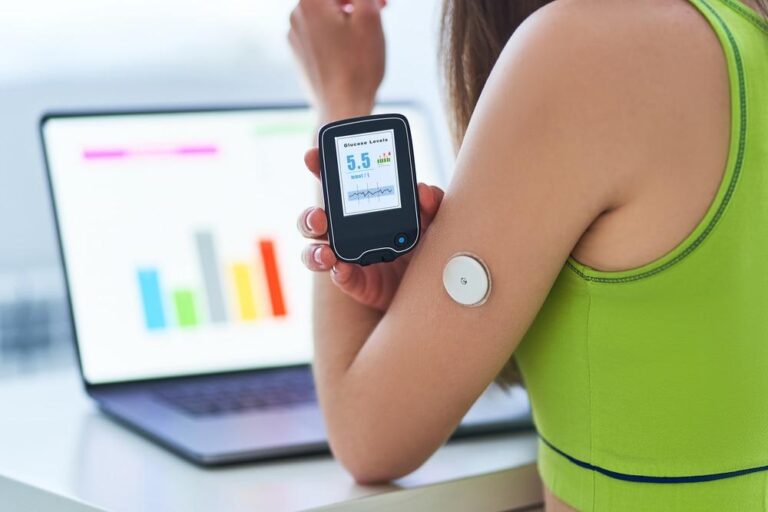In recent years, wearable devices have emerged as transformative tools in the realm of health monitoring, reshaping how individuals and healthcare professionals approach well-being and medical care. these compact, technology-driven gadgets go beyond simple fitness tracking to offer real-time insights into vital signs, activity levels, and even early detection of potential health issues. As wearable technology continues to advance, it plays a pivotal role in enabling proactive health management, personalized treatment plans, and enhanced patient engagement. In this article, we explore how wearable devices are revolutionizing health monitoring today, highlighting their capabilities, benefits, and the promising future they hold for healthcare systems worldwide.
Table of Contents
- The Impact of Real-Time Data on personalized Health Management
- Advanced Sensors Enhancing Accuracy and User Experience
- Leveraging Wearable Technology for Chronic disease Prevention
- Best Practices for Integrating wearables into Daily Health Routines
- Key Takeaways
The Impact of Real-time Data on Personalized Health Management
Access to real-time health data empowers individuals to take proactive steps in managing their well-being. Wearable devices continuously track vital signs such as heart rate, blood oxygen levels, and sleep patterns, allowing users to detect anomalies before they escalate into serious health issues. This dynamic flow of data creates a personalized feedback loop, enabling tailored lifestyle adjustments and timely medical interventions. Moreover, healthcare professionals benefit significantly by receiving instant updates, facilitating informed decisions that enhance patient outcomes.
Beyond personal health benefits, the integration of live data streams fosters a new era of precision medicine. Key advantages include:
- Enhanced chronic disease management: Patients can monitor conditions like diabetes or hypertension continuously, reducing hospital visits.
- Adaptive treatment plans: Therapies can be adjusted based on real-time responses rather than periodic check-ins.
- Preventive health strategies: Early trend detection supports lifestyle modifications that prevent disease onset.
Collectively, these advances are reshaping health management from a reactive model to one that is dynamically responsive and deeply individualized.
advanced Sensors Enhancing accuracy and User Experience
Modern wearable devices integrate a suite of cutting-edge sensors that push the boundaries of precision health tracking. From photoplethysmography (PPG) sensors that capture real-time heart rate variability to multi-wavelength optical sensors that assess blood oxygen saturation, these innovations deliver insights previously limited to clinical environments.Moreover, inertial measurement units (IMUs) combining accelerometers, gyroscopes, and magnetometers enable highly accurate motion and activity detection, allowing users to monitor everything from daily step counts to complex biomechanical patterns during exercise.
Key sensor technologies include:
- Electrocardiogram (ECG) sensors: Offering detailed heart rhythm analysis for early detection of arrhythmias
- Skin temperature sensors: Providing continuous monitoring to detect fever or circadian rhythm changes
- Galvanic skin response (GSR) sensors: Measuring stress levels through minute changes in skin conductivity
These advanced sensors not only enhance data quality but also elevate user experience by enabling personalized feedback. Wearable devices can adapt alerts, optimize exercise recommendations, and even predict potential health events before symptoms manifest, creating a proactive approach to well-being. Such bright sensing capabilities empower individuals with actionable information, seamlessly woven into daily life without the need for bulky medical equipment or hospital visits.
Leveraging Wearable Technology for Chronic Disease Prevention
Wearable technology has transcended its role as a mere fitness accessory to become a critical tool in chronic disease management. these devices continuously collect a wide array of physiological data, enabling early detection of potential health issues before symptoms even manifest. By monitoring parameters such as heart rate variability,blood oxygen saturation,and sleep patterns,wearables empower both patients and healthcare providers with actionable insights. This proactive approach not only facilitates personalized care plans but also significantly reduces hospitalizations and medical costs, fostering a more sustainable healthcare system.
The integration of real-time data analytics with wearable devices opens new frontiers in chronic disease prevention. Some key benefits include:
- Early intervention: alerts for abnormal readings prompt timely medical consultations, minimizing complications.
- Behavioral modification: continuous feedback encourages healthier lifestyle choices, such as increased physical activity and better nutrition.
- Remote patient monitoring: Enables clinicians to track patients’ health remotely, ensuring consistent surveillance without frequent hospital visits.
- Enhanced adherence: Reminders and personalized coaching improve medication compliance and self-management.
By leveraging these capabilities, wearable technology acts as a frontline defense, transforming chronic disease prevention into a dynamic, data-driven endeavor.
Best Practices for Integrating Wearables into Daily health Routines
To seamlessly embed wearable technology into everyday health management, it’s crucial to establish a consistent routine that harnesses the full potential of these devices. Begin by setting realistic monitoring goals tailored to your specific health needs—whether tracking sleep patterns, heart rate variability, or daily activity levels. pair your device’s data with actionable insights by using companion apps that translate raw numbers into personalized recommendations. Equally critically importent is maintaining your device regularly—ensuring firmware updates are installed promptly to access the latest features and security enhancements. This proactive approach ensures accuracy and longevity, amplifying the benefits wearables deliver in health tracking.
Integration also involves fostering mindful interaction with the collected data. Avoid becoming overwhelmed by constant notifications or focusing solely on numerical feedback. Rather, cultivate habits that transform data awareness into sustainable lifestyle changes. For instance, use reminders provided by your wearable as prompts to take movement breaks or practice breathing exercises during stressful moments. Additionally, leverage syncing capabilities with healthcare providers or wellness coaches, enabling a more informed and collaborative approach to your health journey.These strategies empower users to transform their wearable devices from passive gadgets into dynamic tools for continuous, informed wellbeing.
Key Takeaways
wearable devices have truly transformed the landscape of health monitoring, offering unprecedented access to real-time data and personalized insights. As technology continues to advance, these tools are becoming increasingly integral to proactive health management, empowering individuals and healthcare providers alike. Embracing wearable technology not only enhances our ability to track and improve wellness but also paves the way for a more connected and informed approach to healthcare in the years ahead.

